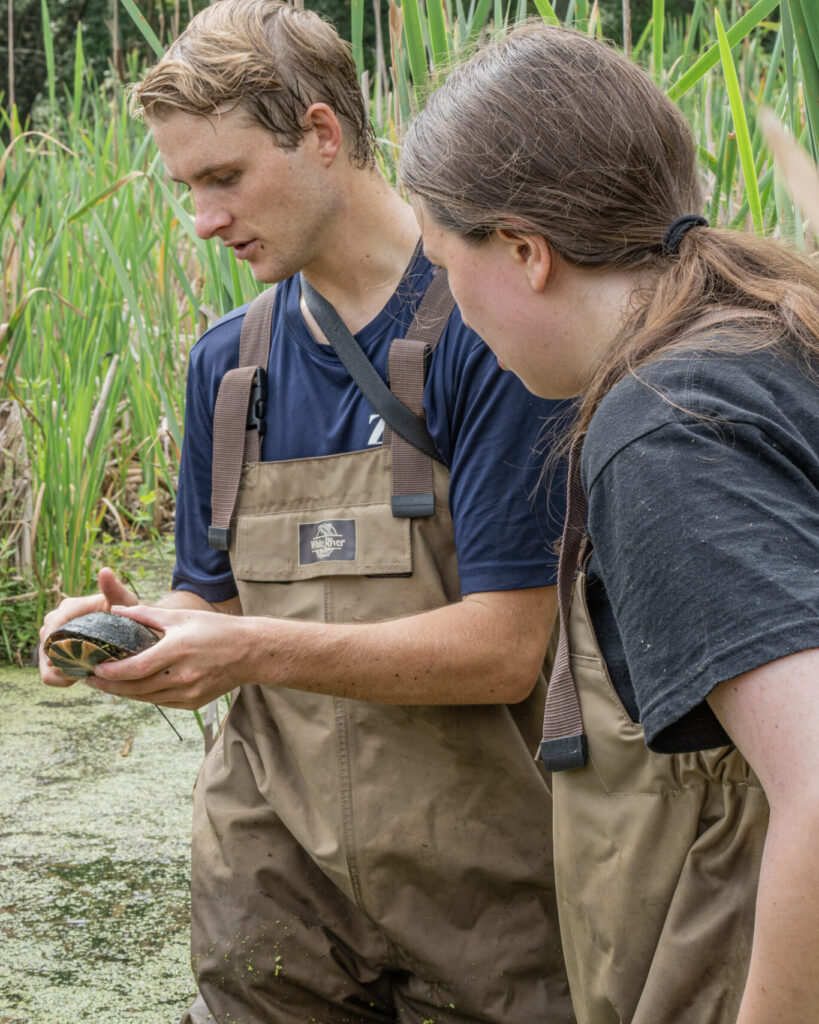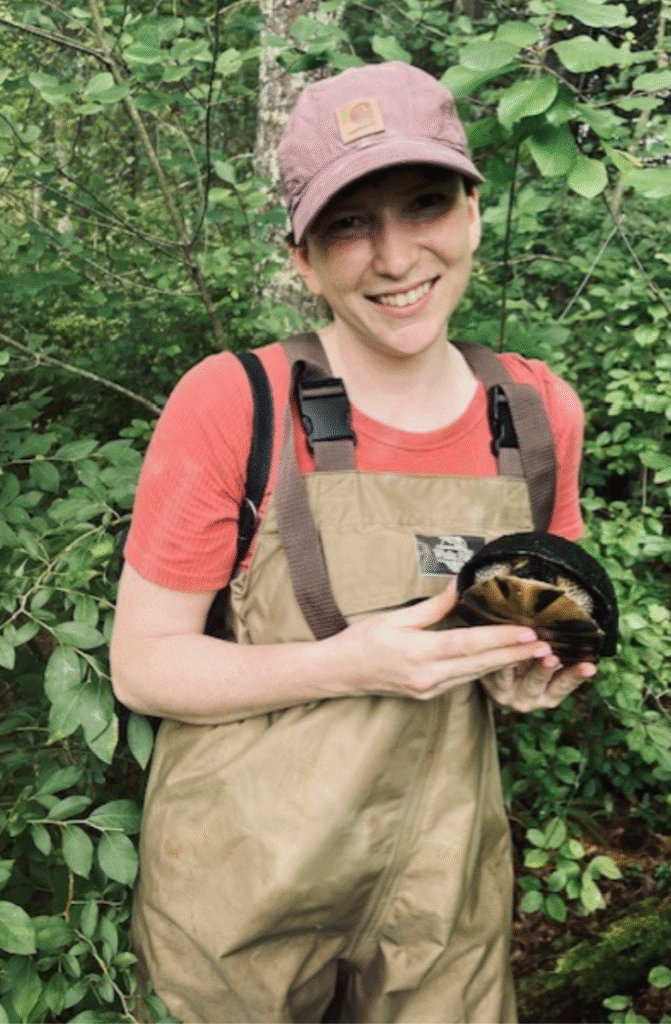Field biologists and veterinarians working together to save turtles

From Jimmy Welch, ZNE Senior Field Conservationist:
This past July, as turtle nesting season was coming to a close, there was still one turtle I was on the lookout for: Blanding’s turtle #2042, an older female in our Great Meadows population in Concord, Massachusetts. She is a notoriously late nester, so it didn’t surprise me that she hadn’t nested yet, but I wasn’t sure where or when I would find her because she is also known for her impressive travels, regularly moving between multiple wetlands, including two that are 1.25 miles apart as the crow flies.
On July 1st, My colleague Heather Nelson picked up her signal in Bedford, just across the town line. She was cowering under some bushes in the backyard of a home. My excitement at finding her quickly evaporated when I discovered that she had a serious injury to her back right leg. Her leg bone was exposed and her weight was surprisingly low considering we felt she still had eggs. She had likely been mauled by a wild predator or even possibly a dog. We immediately contacted our veterinary team at the Franklin Park Zoo Hospital and transported her for emergency care.

From Dr. Abby Needleman, ZNE Associate Veterinarian:
Blanding’s turtle #2042 arrived at the veterinary hospital at Zoo New England with major injuries to the right hindlimb. Our initial evaluation revealed that she was emaciated and in poor condition, but that she was carrying 9 eggs!
With a collaboration of knowledge and shared goals, the medical team was able to stabilize this turtle to undergo major surgery. Typically, a turtle in good health status will be “induced” to lay her eggs in a warm, quiet environment prior to major medical intervention. This was attempted, but examination revealed an even more serious complication: One of the eggs was blocking her pelvic canal.

The team was able to work creatively and perform a total amputation of the infected leg while removing the egg that was obstructing normal oviposition (egg-laying). Once she recovered from this major procedure, she received a novel hormone protocol that resulted in an easy passage of 8 intact eggs.
While some turtles may be kept in a hospital setting for weeks to months on end following this type of procedure, #2042’s recovery was swift and we knew she would be happiest back in the wild with access to her normal diet and habitat.
Jimmy came to pick her up and released her back to the wild.
Her return to
the wild
Turtles with just three legs, known as “tripods,” can survive and reproduce successfully, and #2042 has proven herself a resilient survivor. Despite her traumatic ordeal this year, she’s already regained a healthy weight and returned to her normal ranging behavior.
Her resilience is a testament to the strength of this species, but also a reminder of why our conservation work matters. Every individual Blanding’s turtle counts in this threatened population. We’ll continue to monitor her progress closely, and we hope to see her return to nest successfully next summer. Check back for updates on her journey!

Leave a Reply